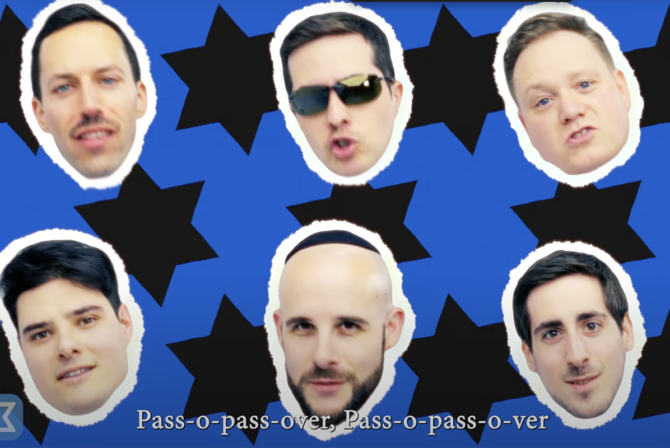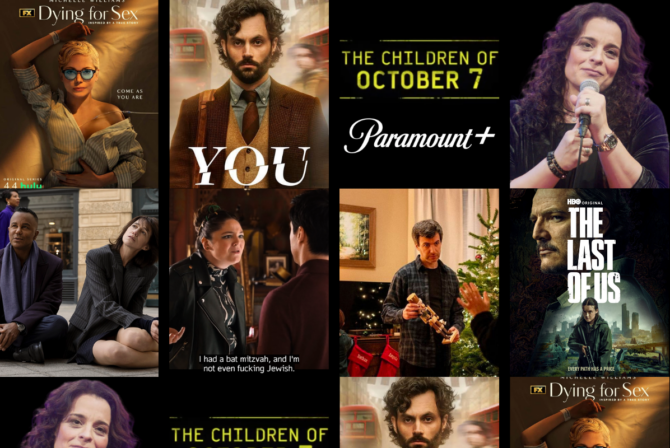“Mommy, can we put up Christmas decorations in the house?”
And thus began yet another December conversation. Christmas decorations are out of the question for us, as we don’t celebrate Christmas in our home. That particular line in the sand is quite clear in my mind, but that’s pretty much where the clarity ends.
My family background is a mix of secular Jews, Oklahoma Christians, and skeptical Italians. I was raised hanging pickle ornaments on Christmas trees with my mother and siblings and singing holiday carols at my Jewish grandmother’s parties.
The relics of my family history reflect this messy mix: I have a mezuzah necklace that my grandmother gave me, a wooden icon with the Virgin Mary on it that my great-grandmother brought with her from Italy, and an old Johnny Cash-style family bible with the Words of Jesus in Red and generations of birthdays carefully inscribed on the inside cover that belonged to yet another great-grandmother. I have a wooden cross (or, as my daughters call it, a fancy plus-sign) covered with small metal Milagros, religious folk charms that are quite popular in Mexico and New Mexico—two places that played significant roles in my childhood.
READ: Tips for Interfaith Families on How to Talk About Christmas
So, what do I do with all of them now? I pondered this question the other day as I hung our mezuzot on door frames throughout our new house. The red ceramic chili pepper from Santa Fe is in the entry to the kitchen, a surprisingly sturdy cardboard one that my husband made in first grade hangs in our daughter’s bedroom, and a modern pewter one that my sister gave me years ago is right outside the back door. It made me so happy to decorate our home with these symbols of our culture, community, and faith. I thought about how far I have come in my Jewish journey, and how much meaning and happiness I derive from Judaism.
But these mezuzot are not my whole story. Even though we are not an interfaith family, I have an interfaith background. Before I became a mother, I didn’t want to deal with the messiness of my family and ancestry; I wanted my story to be as neat and tidy as my husband’s: He’s a nice Jewish boy born to two Jewish parents; he went to day school, Jewish summer camp, and Israel.
I spent years trying to mold my messy story into a tight little narrative, one that wouldn’t elicit confused looks and a string of clarifying questions. It rarely worked.
READ: The ‘Only Jew at the Dinner Table’ Feeling
And then I became a Jewish (Jew-ish?) mother, and something started to shift. I’m still trying to figure out what it was, but I found myself feeling less sure of what I wanted even as I became more sure of who I was. Maybe it was the natural progression of the development of my identity as a Jew; as I felt more comfortable living a Jewish life, I felt less of a need to try to shoehorn myself into an increasingly narrow definition of what it means to be Jewish. Or maybe it was the inevitable outcome of answering my daughters’ frequent questions about where I come from, who is in my family, what they believe, and which holidays I celebrated as a child. My family background is at times confusing to my children, but I am committed to sharing the truth with them whenever I can. Our family has carried too many secrets over the generations, a tradition I am eager to let go of.
Or maybe it’s just that becoming a mother has somehow opened my mind and heart to the beauty of life’s complexities in ways that I never expected. I spent my early adulthood trying so damn hard to get a handle on exactly who I was and what I was all about; I had little patience for contradictions and inconsistencies. And then I had children, and I realized I am nothing if not a walking ball of contradictions and inconsistencies, and that most of the time, it’s not nearly as bad as I had imagined it to be.
I also found myself longing to feel connected in ways that I had never had before, and not just to my present-day community of family, friends, and other parents. There’s something deeply unmooring about taking on the task of raising another human being. Without ever realizing it, I began searching for anything that would help ground and guide me, including my own family history.
In the midst of all the chaos and confusion of becoming a Jewish mother, helping to create a Jewish home, and raising two Jewish daughters, I am finding something deeply unexpected: a sense of trust. I am learning, slowly and awkwardly, through each stumble, misstep, and occasional moment of clarity and competence, that I can be exactly who I am—a Jewish mother who feels more comfortable singing along to Willie Nelson than Barbara Streisand and serves her family quesadillas and guacamole for Shabbat dinner each Friday night—and still be able to give my daughters the sense of self and place that it has taken me nearly four decades to find.
READ: How I Got Santa Removed from My Kid’s School (And Started a Media Scandal)
And so the search for my line in the sand continues, but over time it’s starting to be more about the sand and less about the line. We still won’t have any Christmas decorations in our home, but I’ve put my Milagro-encrusted “plus-sign” on the shelf in our family room, next to the menorah my husband was given as a gift for his eight grade graduation. I’ll hang the icons of the Virgin Mary on the wall of my office, right above the tipping piles of books on Jewish parenting and Jewish mindfulness practice.
And each time I look at the slanted mezuzot hanging throughout our house, I’ll remember that there isn’t one right answer to how to do any of this, and that there is much to be gained from going a little lopsided from time to time.








